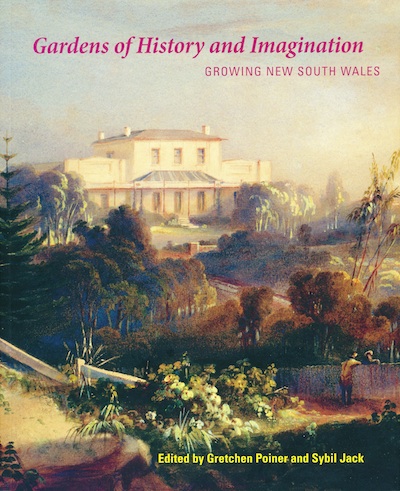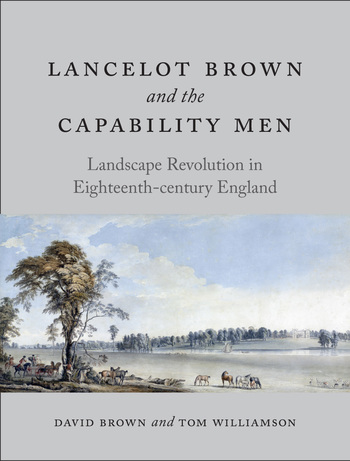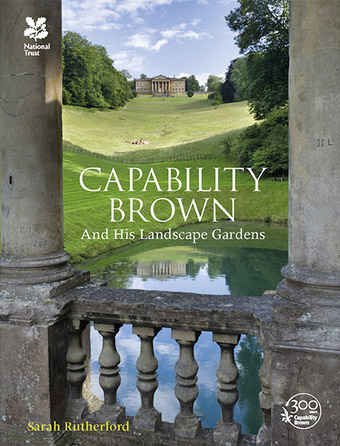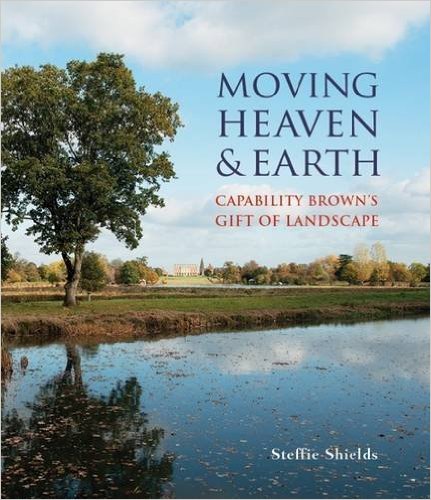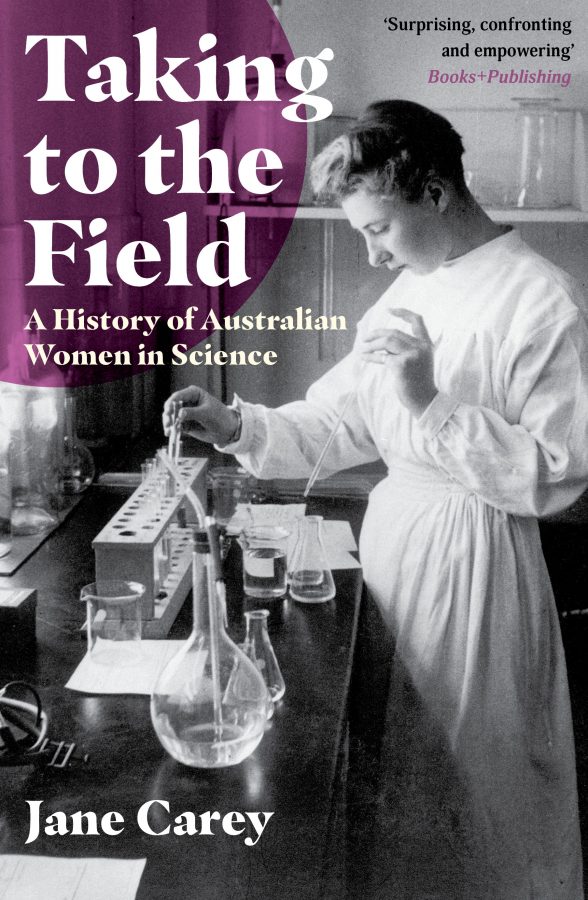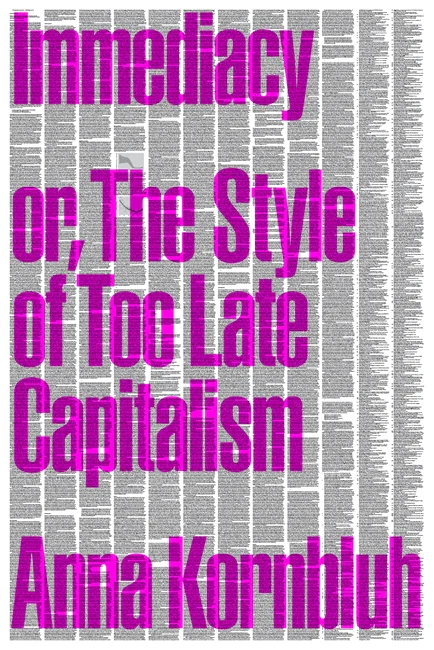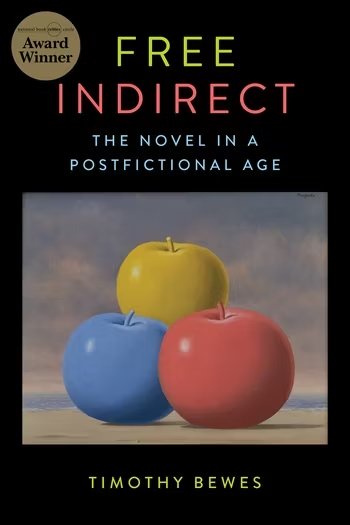On 11 October 1848 the Australasian Botanic and Horticultural Society held its inaugural exhibition, in Sydney’s Royal Botanic Garden. The Society had been established only four months earlier, and its membership included the political, military and social elite of the colony. At the exhibition, brass bands played, while visitors consumed ice creams and ‘sherry cobblers’. Flowers, fruits and vegetables were displayed, with an emphasis on imported and glasshouse plants. The rules of participation were designed to exclude those who ‘lived by the cultivation of the soil’. Rather, the exhibition aimed to gratify the pride and pique the curiosity of people for whom gardening was optional, pleasurable and a sign of social status.
Compare the scene in Sydney 58 years before, as recorded by Watkin Tench, when ‘a convict detected in a garden stealing potatoes’ was sentenced to 300 lashes before being chained for six months to two other convicts, during which time his allowance of flour was stopped. The severity of the punishment reflected the desperate shortage of food in the fledgling penal settlement, where a garden could mean the difference between survival and starvation. To deter future offenders, Tench noted, ‘a proclamation offering a reward of sixty pounds of flour, more tempting than the ore of Peru or Potosi, was promised to anyone who should apprehend and bring to justice a robber of garden ground’ (Tench’s Account of the Settlement at Port Jackson, entry for May 1890).
How far had the colony advanced, materially and mentally, in less than sixty years! Gardening had advanced from a means of subsistence to a platform for the conspicuous display of wealth and leisure. Yet some things remained the same. One was the deference to an English idea of what a garden should be. Just as the plants and seeds brought to New South Wales on the First and Second Fleets reflected British dietary habits with no consideration of local growing conditions, the display at the RHBS exhibition was deemed a success because it equalled the produce ‘in any market place in England’. Another connection between Tench’s story and accounts of the 1848 garden exhibition is the presence in each of plant-theft. Plants were, and continued to be, valuable commodities in colonial Australia, even when their use had shifted from the nutritional to the ornamental. The day after the exhibition, the Sydney Morning Herald reported complaints that, despite the overall gentility of the event, young people – both gentleman and ladies – had been found stealing from the displays. Was this evidence of the enduring ‘taint’ of convictism in colonial society? Or was it a symptom of excessive enthusiasm, either for the upward social mobility that the possession of rare and beautiful plants might offer, or simply for the pleasures involved in the practice of gardening itself?
Ideological connections between gardening, civilization and self-improvement crop up repeatedly in the various chapters of Gardens of History and Imagination: Growing New South Wales. This collection of essays was inspired by the 2016 bicentenary of the Royal Botanic Garden in Sydney, the location both of Farm Cove, where in the late eighteenth century the First Fleeters tried to grow their precious subsistence crops, and of the 1848 exhibition which marked the public presentation of colonial horticulture as a gentlemanly practice. While the historical arc from gardening as ‘an act of settlement’ to garden-making as a sign of capitalistic excess is strongly drawn in the book, equally striking is the consistent presentation of the garden as an aspirational site. Aspiration – to survive, to thrive, to express one’s self, to impress others, to fashion a good life or a good society – is the common denominator that binds together nearly all the gardening projects discussed here.
Take the phenomenon of the ‘garden suburb’, the subject of a fascinating essay in this collection by John Ramsland. The garden suburb movement flourished in Australia at the end of the nineteenth and through the first half of the twentieth century. Taking its cue from English models, such as Cadbury’s Garden Village at Bourneville and Ebenezer Howard’s Letchworth Garden City in Hertfordshire, the movement placed experience of and responsibility for gardens at the centre of its program to redress the social ills caused by urban overcrowding and industrialization. Recently, on a historic walking tour of The Rocks in Sydney, I saw the archaeological remains of the kind of urban habitat against which the garden suburb movement was a reaction – warrens of tiny one- or two-room dwellings, accessed via narrow laneways and staircases, without space for any planting. Such environments were seen as the breeding-grounds of squalor, crime and disease; reformers sought to replace them with planned suburbs in which the care and enjoyment of gardens would instill civic pride and self-respect as well as conferring material health benefits upon the inhabitants.
The garden suburb movement, in Australia as elsewhere in the world, drew on the belief that horticulture could be a vehicle for both self-culture and social reform. This Enlightenment idea, part of the great modern project of ‘improvement’, had roots both classical and biblical. The proponent of the first government-sponsored garden suburb project, the NSW Labor MLA and idealistic social reformer John Dacey, declared: ‘The day is past, when free Australians were content to be herded together in terraces of mere dog-boxes’. This single statement condenses the character of the garden suburb movement as modern (not of the ‘past’), liberal (associated with the state of being ‘free’) and humanist (human beings cannot live in dwellings fitted for animals, such as ‘dog-boxes’). It was also conceived in terms of the national character – this is the kind of life that ‘Australians’ deserve. Walter Burley Griffin raised the stakes further when advertising his new garden suburb, Castlecrag, on Sydney’s North Shore: ‘Civilised man has never had a greater opportunity to find his home in the midst of a natural paradise than that offered to him right in an Australian city’. In Griffin’s vision, the garden suburb was capable of reconciling oppositions between ‘civilized’ and ‘natural’, ‘paradise’ and ‘city’, through the medium of the garden-girt Australian home.
Daceyville was planned as a working-class suburb, whereas Castlecrag was designed and priced for the upper-middle class. Class is a necessary aspect of the history of gardening. In her essay ‘Garden Elements: Seeds, plants and their sources in colonial New South Wales’, Sybil Jack quotes the Victorian (in both senses) botanist Daniel Bunce, who in 1851 recommended horticulture as
a pursuit combining more than any other health, recreation, profit, information and innocent enjoyment, which in its peculiar gift of happy adaptability to the circumstance of all its admirers, imparts a constant and growing gratification in all its stages and degrees from the wide gardens and splendid conservatories of the nobleman to the solitary flower pot of the humble artisan …
In Bunce’s view, the pleasures of gardening are classless – or, rather, they unite ‘all … stages and degrees’ of society in one inclusive embrace. Bunce envisages a kind of horticultural great chain of being, with ‘wide gardens and splendid conservatories’ at the top and the poor man’s ‘solitary flower pot’ at the base. All gardeners have their place in the chain, from ‘the nobleman’ to ‘the humble artisan’. But, hang on – this was the Australian Manual of Horticulture, not the British, Russian or French. Where was that ‘nobleman’ supposed to come from? I suspect he had wandered in from the English-born Bunce’s youthful memories. To me, that’s a kind of Freudian slip, evidence that Bunce’s vision was more fantasy than reality. Also – while I’m being difficult – his image of the humble artisan’s ‘solitary flower pot’ brings to mind the central symbol of Henry Lawson’s story ‘Water them Geraniums’, published fifty years later. What a different horticultural imagination is at work there! Poor Mrs Spicer, ground down by poverty until she is ‘past caring’ whether she lives or dies, uses almost her last breath to remind her daughter to keep watering the flowers that symbolized the last vestiges of her attachment to an alternative self-image as a civilized being, perhaps even a lady. One could read Lawson’s story as an endorsement of Bunce’s philosophy, with Mrs Spicer’s pathetic little flower-garden figuring as the light in her darkness, the manifestation of her higher self. Or one could read the story as the fin-de-siècle naturalist’s rebuff to mid-Victorian idealism, for in the end, keeping a few dusty geraniums alive couldn’t save their grower from the despair to which poverty had condemned her.
Social reformers in nineteenth- and twentieth-century Australia believed that gardens brought out the best in people, because they were sites that combined opportunities for self-expression with the practice of civic responsibility. But as Catherine Rogers reveals, in an essay inspired by her great-grandparents’ home in Burwood, Sydney, many gardens were actually devoted to the lowest functions of animal existence. In the nineteenth century, before the introduction of municipal water, sewerage and garbage services, suburban backyards were sources of water and food as well as being places for the disposal of waste of all kinds. Vegetable patches, poultry runs, fruit trees, wells, water tanks, cesspits, ‘earth closets’, fuel stockpiles, and incinerators or outdoor fireplaces shared the same area behind the house. A well-managed backyard was ‘a critical space that sustained the whole household’. Poorly managed, it could become the nidus of diseases such as dysentery, typhoid and cholera, largely because of cross-contamination between its food-raising, water-supplying and waste-disposing functions. According to Rogers, Australian ‘[b]ackyards were a steady, persistent subject for expressions of disgust in the newspapers’ in the nineteenth-century, places associated with ‘filth’ rather than with beauty or enjoyment.
In the suburbs of cities like Sydney, the utilitarian backyard was often paired with a front garden that was, contrastingly, concerned with display – of wealth, skill and aesthetic taste. We might say, then, that although the nineteenth-century backyard was not an aspirational site, it was a site for organizing (and hiding) the functions that made aspiration possible. It was also a reminder of the most fundamental but often invisible element of gardens – soil. The backyard was a place for digging through, digging up and digging over the earth. Whether locating a water supply, planting seeds, creating compost, harvesting food or burying ‘filth’, people had to engage with the soil in their backyards. The backyard was, to use Tench’s term from the colony’s earliest days, ‘garden ground’: the earth-element employed to meet basic human needs for nutrition and hygiene.
At the opposite end of the spectrum of garden experiences were the great landscaped estates of the very rich. Henrietta Villa, Greenoaks, Elizabeth Bay House, Vaucluse House, Greycliffe, Carrara, Swifts, Yaralla and Retford Park are among the properties of this kind discussed in Gardens of History and Imagination. Carefully designed vistas, carriageways and shrubberies were features of such gardens, along with liberal plantings of imports such as ash, spruce, azaleas, camellias and bamboo, and high-status native species such as Moreton Bay figs and Norfolk Island pines. Words such as ‘lawn’ and ‘grove’ are used to describe the attributes of these highly aestheticized spaces. As Sue Rosen writes, with regard to Retford Park in the NSW Southern Highlands (owned successively by members of the Hordern and Fairfax families, scions of Australian commerce), these landscape-gardens convey a sense of ‘order and refinement and domestication’. Here, the English ideal remained dominant, although it was sometimes inflected by varying degrees of engagement with an indigenous plant-palette.
In his essay ‘Riverine Gardens of Sydney Waterways’, Stuart Read notes that Carrara at Vaucluse is a particularly strong and successful example of emulating an English model, in this case the stylistic formula of the renowned eighteenth-century landscape gardener, ‘Capability’ Brown.
Brown professed a garden must be encircled by a belt of woodland, which could be interrupted for fine distant views, water in the mid-distance, groves and trees left in the foreground and house on a rise overlooking water, with sweeping lawns from water to house. These principles are perfectly applied at Carrara.
As it happens, as well as being the bicentenary of Sydney’s Royal Botanic Garden, 2016 also marks the 300th birthday of the man widely regarded as the greatest – certainly the most famous – of all English gardeners. This is an opportunity, therefore, to compare the way garden heritage is commemorated and understood in England and Australia.
A Capability Brown Festival has been running all year in Britain, with a grant of almost a million pounds provided by the National Lottery Fund to co-ordinate recreational and educational activities across the country in celebration of Brown’s tercentenary. According to the Festival’s website, Brown was ‘a designer who changed the national landscape and created a style which has shaped people’s picture of the quintessential English countryside’. The press release for the key National Trust publication to mark the tercentenary, Sarah Rutherford’s book Capability Brown and his Landscape Gardens, calls Brown ‘the landscape genius who defined the English countryside’. Brown crafted garden-landscapes that were at once ‘natural’ and ‘improved’, translating to the art of gardening the Whig philosophy that shaped the direction of eighteenth-century England’s government and economy. A Brown garden was a liberal space that provided both ‘comforts and convenience’ and ‘freedom to roam’, to borrow two chapter titles from Steffie Shields’ Moving Heaven and Earth: Capability Brown’s Gift of Landscape. The word ‘gift’ in the title has a double meaning. That Brown had a special vision and talent is indisputable; a contemporary admirer, the Earl of Bute, said he had ‘real genius, unfettered and untaught’, identifying Brown with two dominant eighteenth-century ‘isms’, liberalism and primitivism, in a single phrase. A gift can also be a legacy, and Brown left behind him an enduring and highly visible one. His gardens contribute greatly to the fabric of English heritage and are now regarded as part of the national patrimony. In their worldwide influence, they also proved to be the gift that keeps giving. Horace Walpole wrote of the landscape school Brown exemplified, ‘We have given the true model of gardening to the world. Let other countries mimic our taste’.
Australia has no single garden-designer with the kind of brand recognition attached to Capability Brown. (I use the word ‘brand’ advisedly: a clear theme of the new scholarship on Brown is his business sense and marketing genius.) Nevertheless, although their names may not be so well known, there have been individuals in the history of Australian horticulture who crafted the ‘look’ of an entire locality just as much as Brown did. Take the presentation of Sydney as a subtropical city. Colleen Morris’s essay ‘Planting New South Wales’ reveals that it was Charles Moore, director of the Royal Botanic Garden from 1848 to 1896, who was largely responsible for this planting style. Moore brought in Australian rainforest species such as the Illawarra Flame Tree, palm trees from Lord Howe Island, and many other plants that he collected on trips to the Pacific islands. He was also one of the first to experiment with acclimatizing jacarandas from Brazil. In today’s parlance, Moore was a taste-maker, an influencer; horticultural fashion followed his lead. Over the course of the later nineteenth and early twentieth centuries, great swathes of Sydney’s landscape – naturally scrubby and sandy – were transformed to create a luxuriant and colourful subtropical paradise.
I have to sheepishly confess that I had always assumed Sydney’s subtropical look to be, if not entirely natural, the result of some happy accidents. I suppose I realized that someone must have planted the wonderful palm trees that line Macquarie Street, but I wasn’t aware they had been brought from so far away. (They are Canary Island date palms, planted by Moore’s successor at the Royal Botanic Garden, J. H. Maiden.) I knew that our jacarandas, which paint Sydney and many other parts of New South Wales a glorious, unique shade of purple each November, were imported at some stage from South America, but I assumed it was just good luck that we see often see them juxtaposed with the equally brilliant flowers of the Illawarra Flame Tree. Not so, it seems – there was a deliberate fashion for planting these two species, neither of them indigenous to the region, side by side in Sydney gardens in the 1930s.
I can’t imagine Sydney without its palms and jacarandas, yet they are exotics, introduced here less than 200 years ago by enterprising horticulturalists. Capability Brown’s landscape gardens, now considered so quintessentially English, also relied heavily on non-native species. He imported large numbers of plants from North America, including sugar maples, scarlet oaks, Carolina poplars and a vast array of flowering shrubs. Two of Brown’s ‘signature’ trees, the London plane and the Cedar of Lebanon, were an indigenous-exotic hybrid and a pure exotic respectively. Like Charles Moore in New South Wales 100 years later, Brown explored the possibilities of the science of acclimatization in his attempt to create the most beautiful gardens it was possible for him to conceive. It is often said that Brown received his famous nickname from his habit of appraising the ‘capabilities’ of a landscape in terms of its contours and its structural ability to host engineered features such as artificial rivers and lakes. We could go further and say that both Brown and Moore were interested in a given landscape’s capabilities, in terms of soil and climate, to support exotic plant species. ‘Acclimatization’ and ‘capability’ are both words belonging to the lexicon of improvement that was the dominant language of the applied arts and sciences in the eighteenth and nineteenth centuries.
‘Place-making’ was the term Brown used to describe the work he did. It’s an expression at once deceptively simple and gob-smackingly ambitious. How does one make a place? Aren’t places just there, and then we inhabit them? Gardening, along with architecture and engineering, is the human refusal of any such passive relation to matter and space. Lancelot Brown practised all three vocations within his ‘place-making’ business and so, in their own humble way, did the owners of the suburban backyards discussed in Gardens of History and Imagination, as they sought to manage the various water-supply, drainage and waste disposal functions of these overworked spaces. At its grandest, place-making creates a personal or collective sense of home, as when a Sydney-sider looks at the luxuriant subtropical foliage that adorns the city, or when an English person surveys a typical Brown landscape, once the preserve of the very rich, now as likely as not held in ‘trust’ for the nation as a whole.
When speaking of his gardening practice, Brown emphasized the intense artifice that enabled him to create such natural-looking landscapes. He called one of the properties he had worked on to ‘improve’ its sense of settled antiquity ‘the oldest new place he knew in England’.He also used textual analogies to explain the art of place-making, telling the writer Hannah More that his positioning of a tree or turning of a stream within a crafted landscape was like the placement of commas, colons and parentheses within a written text. Similar textual analogies are used in the books under review. Gretchen Poiner writes that gardens make ‘statements’ that fit into a larger ‘narrative’ of class and nation. David Brown and Tom Williamson, as part of their overall argument against a single-genius view of gardening history, describe the landscapes they have studied as ‘palimpsests, multi-period artefacts where even the contributions of the great Capability Brown are underwritten, partly erased and overwritten, and sit alongside elements written in a range of hands’. And while Brown’s garden designs may have been ‘partly erased’ by later hands, they were themselves acts of erasure, in which massive engineering, earth-moving and planting operations ‘erased all signs of earlier history, as well as all aspects of local character’ – rivers changed course, villages were moved or demolished, the traces of earlier farms and gardens swept away.
I imagine that when the genteel or would-be genteel citizens of Sydney went to see the horticultural displays at the Royal Botanic Garden in October 1848, they would have been much more focused on what had been created than on what had been removed to make such creation possible: natural vegetation, sites of Aboriginal land-tending, and traces of their own convict history. Gardens are at once places of renewal and places of forgetting. And so commemorative years like 2016, and in particular the contributions of horticultural historians, matter – they help us to remember how and why our gardens grew.
